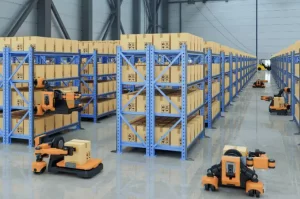How Can You Revolutionize Your Meat, Poultry, and Seafood Warehouse?

As I navigate through the intricate world of meat, poultry, and seafood warehousing, I am consistently reminded of the immense pressures faced by those in our industry. The surge in global demand for meat products collides with ever-rising storage costs, leaving warehouses grappling with shrinking profit margins. It’s a multifaceted problem, amplified by high energy, labor, and raw material expenses. Yet lurking behind these concerns are other shadowy figures: stringent hygiene standards, transportation challenges, and the imperative to preserve our environment. But fear not, there is a silver bullet: optimized warehouse storage equipment.
What Factors Must Be Considered in Warehousing Strategy for Meat, Poultry, and Seafood?
With meat and poultry occupying the lion's share of the United States' agricultural landscape, impeccable storage solutions become paramount. Our nation is home to nearly 7,000 federally inspected meat processing plants, each obligated to maintain top-tier storage facilities. As we dream up these logistics marvels, aligning with industry trends and federal regulations are not merely checkboxes to tick but pillars upon which efficiency is built.
To streamline your strategy, consider these initial points:
-
Capacity: With the hunger for meat and seafood driving demand, warehouse capacities are stretched thin. Many facilities are pushed to their limits, risking the efficacy of their cooling systems. Overcrowding spells disaster for organization and hygiene, and we dare not tread that path.
-
Spacing: Crammed storage units compromise temperatures, potentially dipping below that critical cooling range. It's a nightmare scenario of diminished freshness and nutritional integrity, exacerbated by a lack of air circulation for unwrapped meats.
-
Ergonomics: Given that labor costs are hefty already, efficient workspace design is no luxury but a necessity. Streamlined operations, from unpacking shipments to dispatching products, must permeate every touchpoint in your warehouse.
-
Temperature: The nuances of refrigeration temperatures greatly differ across products. Fish, shellfish, and other seafood thrive at cooler environments compared to poultry and red meats. Compliance systems should guard pools as a watchdog, alert and ready.
-
Material Handling: A finely tuned flow from unloading to storing is an operational balm. Warehouses can rise or fall on their materials handling efficiency.
How Can You Evaluate and Enhance Your Current Storage Methods?
If technology is wielded as a sword, the cutting edge will not become a blunt tool. Examine your current warehouse setup through the prism of potential improvements. Employees informed of industry best practices become stewards of efficiency, not burdens.
The goals are simple:
- Tailor operations to suit state-of-the-art equipment.
- Train staff to eliminate inefficiencies.
- Leverage tools to spawn higher productivity.
Which Equipment is a Game-Changer for Your Operations?
Now, let me guide you through essential warehousing equipment that laces together standards and innovation:
-
Stainless Steel Pallet Retrievers: These stalwarts uphold the virtues of mobility and hygiene. In a world where OSHA and FDA regulations loom large, the stainless steel pallet retriever is a gatekeeper against contamination. They empower swift pallet changes without the infection-ridden speck of past manual methods.
-
Freezer Spacers and Plastic Pallets: Picture these as the dynamic duo—freezer spacers ensuring the dance of air circulation around your precious cargo while plastic pallets prevent ground contact and offer unmatched durability.
-
Lift Tables: True colossi among warehouse machinery, lift tables are the baton carriers of ergonomics. Whether with a lift, pivot, or spin, they elevate not only your products but also your operational potential.
Why is Upgrading Warehouse Equipment Non-negotiable?
In an era where maintaining the status quo equals stagnation, those who stand still fall behind. The financial influx required for state-of-the-art equipment might cast a menacing shadow but pales in comparison to the revenue potential tethered to well-oiled machinery.
Here's why upgrading matters:
- Investment Return: It combats operational inefficiencies and boosts your competitive edge substantially.
- Labor Costs: Automated solutions drastically trim expenses tied to human resources.
- Control Systems: Modern machines bring unprecedented precision to your business operations, proof against the chaos sowed by manual errors.
Together, these advancements form a cohesive symphony in your machinery ensemble, harmonizing with long-term business strategies to deliver future-ready solutions.
In my experience, staying toe-to-toe with advancements in equipment and practices is akin to arming oneself in a fiercely competitive battlefield. It's not just about surviving; it's about thriving in a dynamic and demanding industry. As you reassess and realign your warehouse strategies, don't settle for mediocrity. Strive for excellence.



